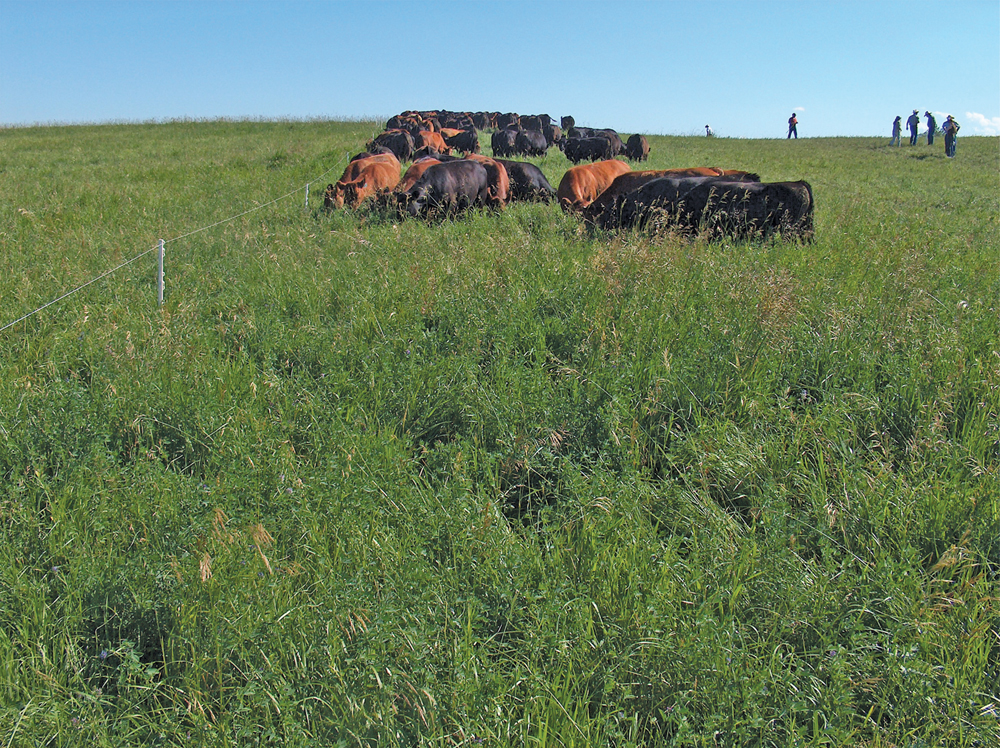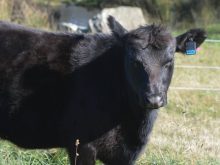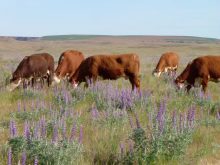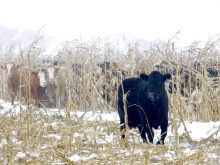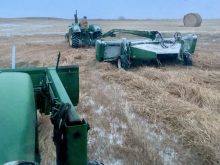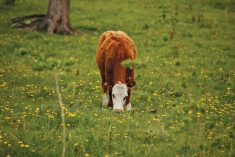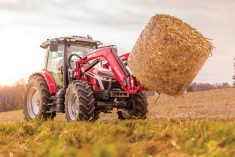The question about how to rejuvenate a pasture economically has been around for as long as I can remember. Breaking up and reseeding a pasture can be expensive and time-consuming.
Grey wooded soils with tough old bluegrass/fescue sods are particularly challenging to get a decent seedbed developed. It is often recommended to grow cereals for a couple of years before seeding perennial forages to give time for those old sods to break down. Also, large cereal seeds tend to survive better than small forage seeds when a seedbed is less than ideal.
Read Also

Beef demand drives cattle and beef markets higher
Prices for beef cattle continue to be strong across the beef value chain, although feedlot profitability could be challenging by the end of 2025, analyst Jerry Klassen says.
Because of these costs, many are interested in different ways to improve pasture production and quality without breaking up the pasture and starting over.
Often attempts are made to add legumes into pasture. Over the years seeding equipment has been developed to seed directly into sod, or broadcasted onto the sod. There’s been lots of debate over the effectiveness of different equipment.
Rejuvenating challenges
One of the biggest hurdles for sod seeding has been, and still is the competition from the existing forage stand. Another has been getting good seed-to-soil contact without getting the seed too deep. This is especially a problem on old bluegrass/fescue pastures with a tough layer of sod and thatch. Thatch is that layer of dead organic material covering the soil between plants.
To deal with the competition, many have resorted to applying a half rate of glyphosate to the existing forages. This usually slows forage growth without actually killing it, allowing new seedlings to get established.
Others choose to finish the previous grazing season by severely overgrazing the pasture to be sod seeded. Seeding at some time during the dormant season ensures that seeds are ready to germinate as soon as there’s sufficient warmth.
Still others have resorted to mixing legume seed with free-choice, fed-loose minerals to let the livestock spread the seed across the pasture. I’ve learned the animal will digest 80 to 90 per cent of the seed when this system is used. That’s fine when the seed is dirt cheap, but isn’t a great idea for more expensive seed.
I’ve also learned that seeds consumed while still on forage plants in fall are much more likely to survive the trip through the animal’s gut — as much as 80 to 90 per cent of the seeds will survive. So, you do this by allowing forage stands to get mature enough to make high levels of mature seed available for this purpose. The only drawback is that you won’t be introducing new species to the pasture, if that’s what you want.
Using this system, it is also possible to have the livestock carry the seed from one pasture to another. Simply graze a pasture with the forage mix you want and then move the livestock to the pasture you want to rejuvenate so they can deposit the seeds there while they graze. It would be a good idea to severely graze that pasture to reduce competition for new seedlings if you’re using this method.
Overgrazing is the major culprit
Often, however, the problem with a pasture is not the forage species. Grazing systems that allow a lot of overgrazing is usually the major culprit. Overgrazed plants tend to miniaturize. Tiny top growth and shallow roots limit the plant’s ability to capture sunlight and access water and nutrients.
In most of our area in west-central Alberta, we see the only forage species that thrive are those that can handle such overgrazing. Kentucky bluegrass, white clover and dandelions dominate these pastures. Encroachment of weedy species like tall buttercup, wild caraway, scentless chamomile, ox-eye daisy, strawberry, yarrow, and in drier areas, pasture sage, absinthe/wormwood and others are more common.
Even if you’ve broke up and reseeded a pasture, if you continue to allow overgrazing of the pasture, you will soon be back to that point and have to reseed all over again.
In all but the worst cases, changing your grazing management strategy to minimize overgrazing will improve the health and productivity of plants and pastures. If your pastures have a long history of overgrazing, we often cannot afford to wait till grazing management alone can rejuvenate a pasture. Some kind of major intervention often becomes necessary.
When pastures get that bad, their soils are often depleted of organic matter, nutrients and soil microbes. Instead of being a vibrant community of symbiotic relationships between aerobic organisms, plants, organic matter, water and air, these soils become dormant, with very little microbial activity.
Healthy, vibrant aerobic microbial activity is vital for healthy, productive plants. Organic matter is important, not only as a food source for microbes, it also enables soils to have good structure which allows soils to hold water, nutrients and sufficient air for those beneficial microbes.
Soils with little organic matter, more so with clay-based soils than sandy soils, will be low in oxygen, thereby creating an environment suitable only for anaerobic microbial populations. Sandy soils with low organic matter tend to allow nutrients to leach out.
Most anaerobic microbes tend to be of the disease-causing, or plant-damaging varieties. By increasing oxygen-holding capacities of soils, you will shift the microbial populations from anaerobic to aerobic species. You do this by increasing organic matter and beneficial microbial populations in soils, your pastures can and will become healthy and productive.
You also need to avoid the use, or overuse of fertilizers in the form of soluble salts and pesticides that kill beneficial microbes. Anything you do that reduces beneficial microbes will increase disease-causing and damaging microbes. By adopting practices that increase beneficial, aerobic microbes you not only reduce damaging microbes, you also protect plants from damage and diseases caused by anaerobic microorganisms.
Not an expensive fix
OK, so how can we get this done in our pastures? Does it require a whole lot of expensive soil amendments applied by expensive equipment?
No, you can use the tools you normally have on hand — the grazing animals. Simply by changing to a system that uses high stock density grazing for short durations, followed by sufficient recovery times, you can get these natural processes working again.
High stock density grazing with lots of trampling and manuring provides an excellent food source for many beneficial organisms, from earthworms and dung beetles to bacteria and fungi. Allowing plants to fully recover after each short grazing period allows the cycle of roots growing and sloughing off to contribute large amounts of organic materials for food and habitat of beneficial microbes.
Beneficial bacterial and fungal microbes, by consuming organic materials and other microbes, convert these into plant available nutrients and hold them. Aerobic protozoa, nematodes and microarthropods eat bacterial and fungal microbes and, by defecation, make the nutrients available to plants.
When you begin using grazing management systems that promote this kind of mineral and nutrient cycling by providing good food and habitat for beneficial microbes, you kick the whole system into gear. You benefit from increased production of healthy, nutritious forage plants. Your livestock benefit by being healthy and productive and you benefit by increased dollars in your pocket, without the drain of expensive inputs.
So, while cattle prices are high and you’re making a good profit, invest some of those dollars into your pasture infrastructure. Those investments now can set you up so you’ll have greatly reduced production costs, making you even more profitable, now and even when cattle prices go through the low end of their economic cycles. †

